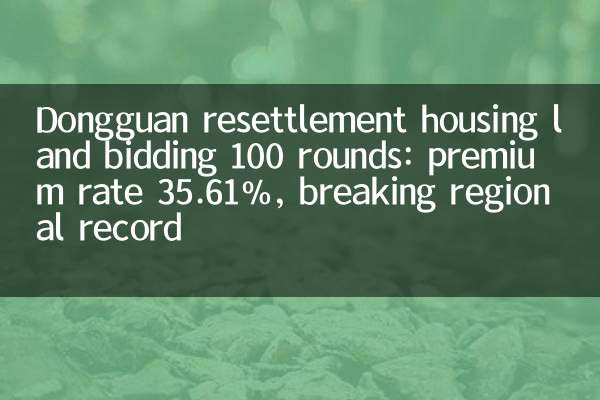New home sales area fell by 11% year-on-year in August: the differentiation between core cities and low-level cities has intensified
Recently, real estate market data has once again attracted widespread attention. According to monitoring data from the National Bureau of Statistics and third-party institutions, the national new home sales area fell by 11% year-on-year in August 2023, and the market differentiation trend further intensified. Core cities and low-level cities showed a "ice and fire" pattern. The following is a detailed analysis:
1. Overview of national new home sales data

| index | August 2023 | Year-on-year changes |
|---|---|---|
| New house sales area (100 million square meters) | 0.78 | -11% |
| New home sales (trillion yuan) | 0.92 | -14% |
| The proportion of sales area in first-tier cities | 18% | +3% |
Judging from the overall national data, the sales area and sales of new homes both declined in August, reflecting that market confidence has not yet fully recovered. It is worth noting that the proportion of sales in first-tier cities has risen against the trend, highlighting the characteristics of structural differentiation.
2. Urban energy level differentiation intensifies
| City Type | Sales area changes year-on-year | Inventory sales cycle (month) |
|---|---|---|
| First-tier cities | -5% | 12.1 |
| Second-tier cities | -9% | 15.7 |
| Third- and fourth-tier cities | -twenty three% | 24.3 |
Data shows thatThird- and fourth-tier citiesThe sales area fell by more than 20% year-on-year, and the inventory pressure was significantly higher than that of core cities. Although first-tier cities are also facing a decline, the decline has narrowed significantly, and some hot real estate projects have even experienced "sunshine".
3. Policy effects and market expectations
Since August, many places have introduced real estate stimulus policies:
But from the perspective of policy effectiveness, core cities are more sensitive to policies. Taking Beijing as an example, the transaction volume of new homes in the first week after policy optimization increased by 32% month-on-month, while low-level cities received mediocre responses during the same period.
4. Future trend analysis
Industry experts believe that market differentiation will exist for a long time:
5. Changes in home buyer portraits
| House buyers | Changes in proportion | Main features |
|---|---|---|
| First time to buy | -8% | Strong wait and see |
| Improved type | +5% | Prefer core area |
| Investor | -15% | Basically exit from the market |
The current market is dominated by self-occupied demand, and improvement customers have become the main home buyer. Experts suggest that differentiated policies should be adopted for the energy levels of different cities, and purchase restrictions can be moderately optimized in core cities, and low-level cities need to strengthen industrial supporting facilities to enhance attractiveness.
(Full text ends)

check the details

check the details